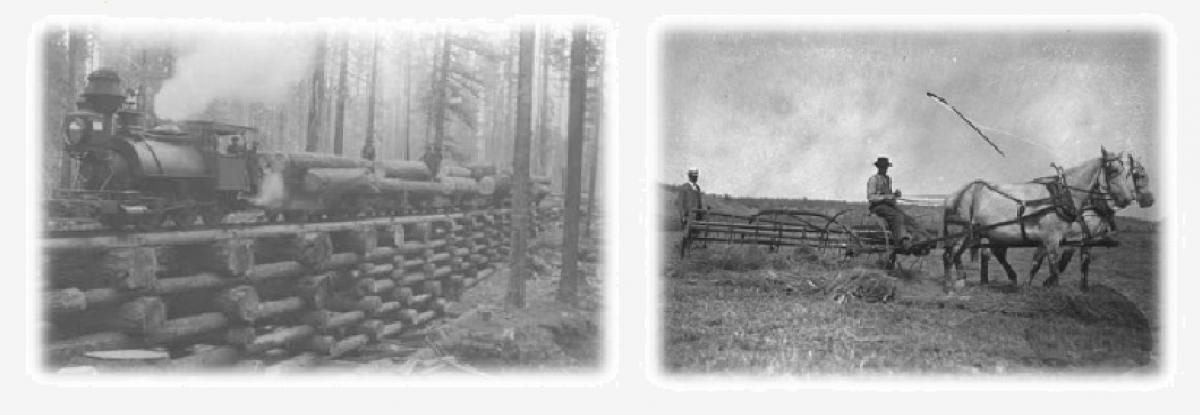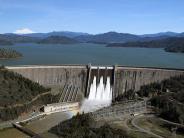A Brief History of California Agricultural Commissioners

Shasta County is one of California’s original twenty-seven counties created in 1850 at the time of statehood. By the end of the nineteenth century, many California counties were witness to a period of rapid expansion fueled by California’s vast abundance of natural resources and flourishing industries. Settlers from all over the world flocked to California, bringing not just their families, but also the trees, vines, and seeds for their homelands. Unfortunately, the introduction of new plants brought with it the potential for new plant pests, in the form of invasive insects and plant pathogens, which posed a danger to California’s robust agricultural and environmental resources. The introduction of new and invasive plant pests created significant new challenges for the state’s farmers, so much so that in 1881, in an effort to combat the risks facing the state’s agricultural economy, the California Legislature provided counties with the authority to establish local Boards of Horticultural Commissioners tasked with protecting the state’s growing tree and vine industries.
In 1919, the legislature created a single department, now known as the California Department of Food and Agriculture and charged it with the task of protecting and promoting agriculture in the state. In 1920, following the creation of this department, the legislature brought the several County Horticultural Commissioners and their deputies under the direction of the Director of Agriculture. In 1929, the title of Horticultural Commissioner was changed to Agricultural Commissioner. Presently, the County Agricultural Commissioners, under the direction of the California Department of Food and Agriculture and the California Department of Pesticide Regulation, conduct regulatory and service functions required by state and federal laws and by local measures and ordinances in their respective counties throughout the state.
In 1970, the functions of the County Sealer of Weights and Measures were combined with those of the County Agricultural Commissioner. California Consumers have received protection from the use of false weights and measures since 1915, when the state’s legislature established that each county shall have a Sealer of Weights and Measures. The County Sealer of Weights and Measures uses standards, which are traceable to the National Institute of Standards and Technology, to test weighing and measuring devices throughout the county.
OUR MISSION
The Shasta County Department of Agriculture/Weights and Measures is entrusted with the mission of promoting and protecting the county’s agricultural industry while maintaining the health and beauty of our county’s environment and ensuring for the health and safety of the county’s citizens. The Department strives to foster confidence and equity in the marketplace through education and engagement with the community, and through the fair and uniform enforcement of laws, regulations, and ordinances that have been enacted by the people of California and the County of Shasta.
Past to Present Horticultural Commissioners & Agricultural Commissioners:
Board of Horticultural Commissioners
Ada Camden William Weaver 1884-1910
H.K. Petigrave G.A. Lamiman
Nicias Watson C.N. Tharsing
Horticultural Commissioners
George A. Lamiman 1910 -1918
B.F. Stroup 1918 -1954
Agricultural Commissioners
C. Bruce Wade 1954 -1984
Kenneth Wright 1984 - 1987
Kit Cassaday 1987 – 1993
Mary C. Pfeiffer 1993 – 2014
Paul Kjos 2014 – 2019
Rick Gurrola 2019 -- 2023
John Ingram 2023 -- Present
SHASTA LAKE – THE CORNERSTONE OF THE CENTRAL VALLEY PROJECT
Completed in 1945 and standing 600 feet tall and over 3,400 feet in length, Shasta Dam captures water from the Sacramento, McCloud, and Pit Rivers, which combine behind the dam to create California’s largest reservoir, Shasta Lake. With a storage capacity of 4.5-million acre feet, Shasta Lake became an integral water source for the Central Valley Project, which transports water from Northern California to Bakersfield in the southern San Joaquin Valley. The water stored behind Shasta Dam enables irrigation districts and municipalities to pull water throughout the summer months to support our state’s vast agricultural industry and to provide clean water to cities and town throughout the state. The dam now provides crucial flood control for those who live along the Sacramento River’s historical floodplain and serves as an important source of hydroelectric power in California. Shown below is a picture depicted as the "Three Shasta's" with Shasta Dam, Shasta Lake and Mount Shasta all visible in one picture.

